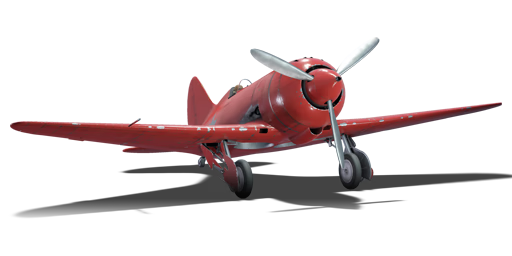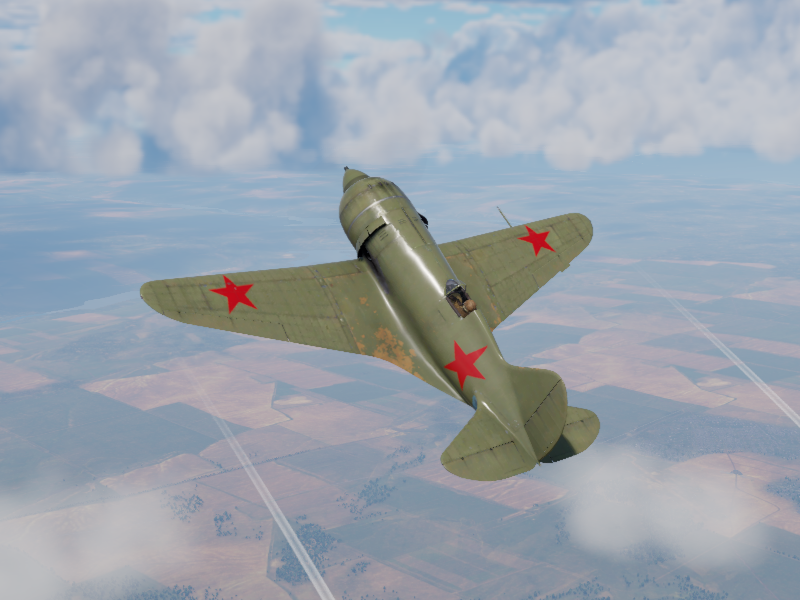


The I-180S was an attempt by the Polikarpov Design Bureau to extract more performance out of the I-16's airframe. The aircraft had a troubled development, including the death of one of its test pilots in a prototype. The aircraft was meant to fulfil the requirements for a new interceptor with a radial engine. The aircraft suffered problems with the engines and the propeller, being armed with a set of 2 x 12.7 mm Berezin BS and 2 x 7.62 mm ShKAS machine guns over the engine. The cancellation of the I-180S is attributed by some historians to the intentions of promoting younger designers over Polikarpov, as well as favouritism in the high spheres of influence of the Soviet Union.
It was introduced during Update 1.87 "Locked On" as a reward for the 2019 "Battlefield Engineer" event. The I-180S is very similar visually to the I-16 and its many variants. It could even be considered a faster version of it, since its creation was with the idea of using the I-16 as a basis for a more powerful fighter. The I-180 may lack the adequate weaponry compared to many fighters around its BR that already fit 20 mm or even 30 mm cannons. However, the I-180 compensates this with outstanding flight performance, the acceleration is nothing too special but it has a very good top speed, climb rate, and turn rate. This means that it can get into good positions since the start of the match, and even intercept bombers flying at high altitudes without much problem.
flaps
flaps
flaps
brake
| Belt | Belt filling | Armor penetration (mm) at a distance: | |||||
|---|---|---|---|---|---|---|---|
| 10 m | 100 m | 500 m | 1000 m | 1500 m | 2000 m | ||
| T/AP/AP/IAI | 32 | 30 | 22 | 15 | 11 | 7 | |
| AP-I/API-T/IAI/IAI | 29 | 27 | 20 | 13 | 9 | 6 | |
| API-T/AP-I/AP-I/IAI | 29 | 27 | 20 | 13 | 9 | 6 | |
| AP-I(c)/AP-I/AP-I/API-T/IAI | 34 | 32 | 24 | 17 | 12 | 8 | |
| API-T | 29 | 27 | 20 | 13 | 9 | 6 | |
| AP-I/AP-I/IAI | 29 | 27 | 20 | 14 | 9 | 6 | |
| Belt | Belt filling | Armor penetration (mm) at a distance: | |||||
|---|---|---|---|---|---|---|---|
| 10 m | 100 m | 500 m | 1000 m | 1500 m | 2000 m | ||
| T/Ball/Ball/AP-I/AI | 13 | 12 | 7 | 3 | 2 | 0 | |
| AP-I/AI/API-T | 13 | 12 | 7 | 3 | 2 | 0 | |
| AP-I/API-T | 13 | 12 | 7 | 3 | 2 | 0 | |
| AP-I/AP-I/AP-I/AI | 13 | 12 | 7 | 3 | 2 | 0 | |







 2 x (50 / 120 / 320) %
2 x (50 / 120 / 320) % 
 2 x 124 %
2 x 124 % 

Flight performance | |
|---|---|
Survivability |
|---|
Weaponry | ||
|---|---|---|
